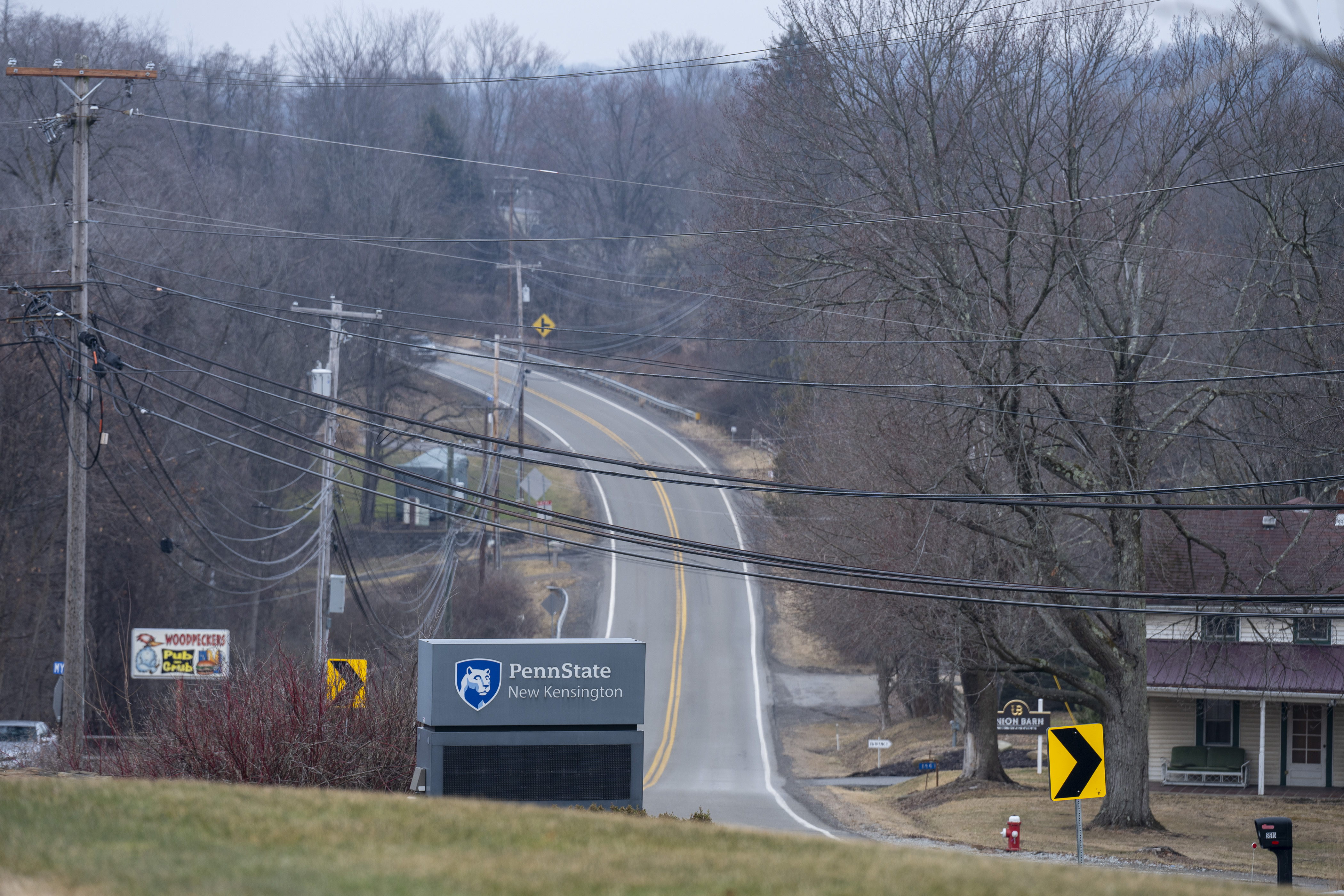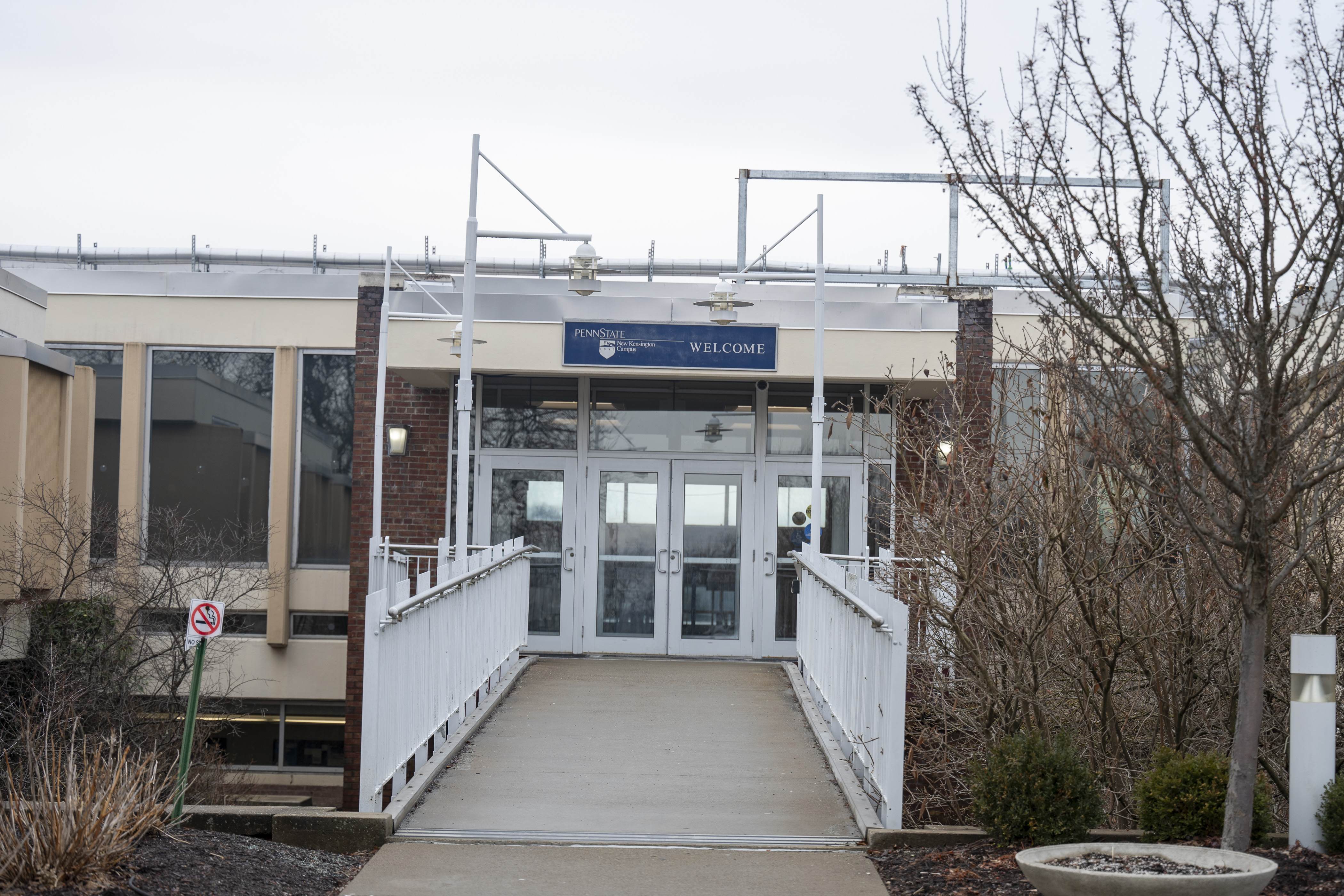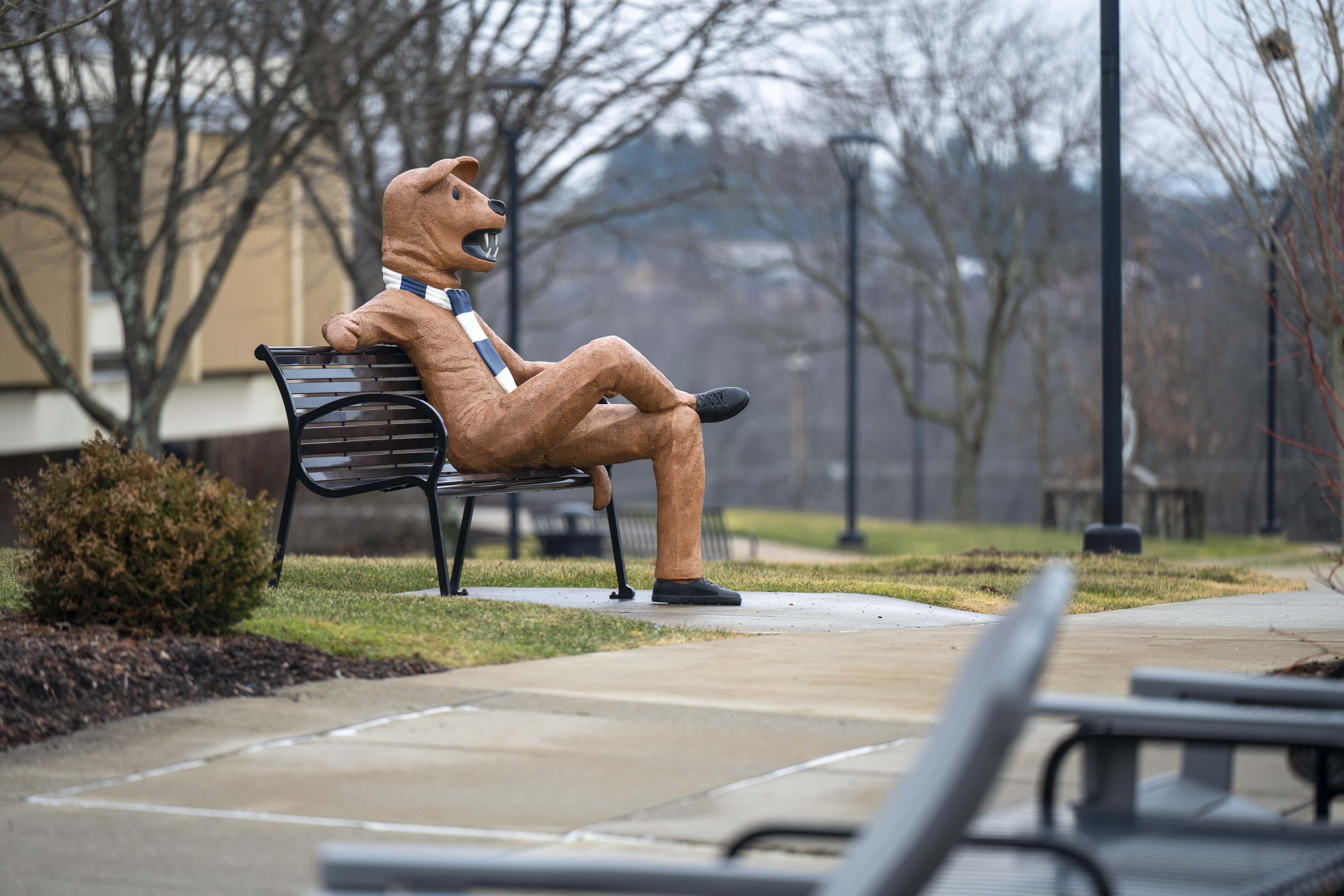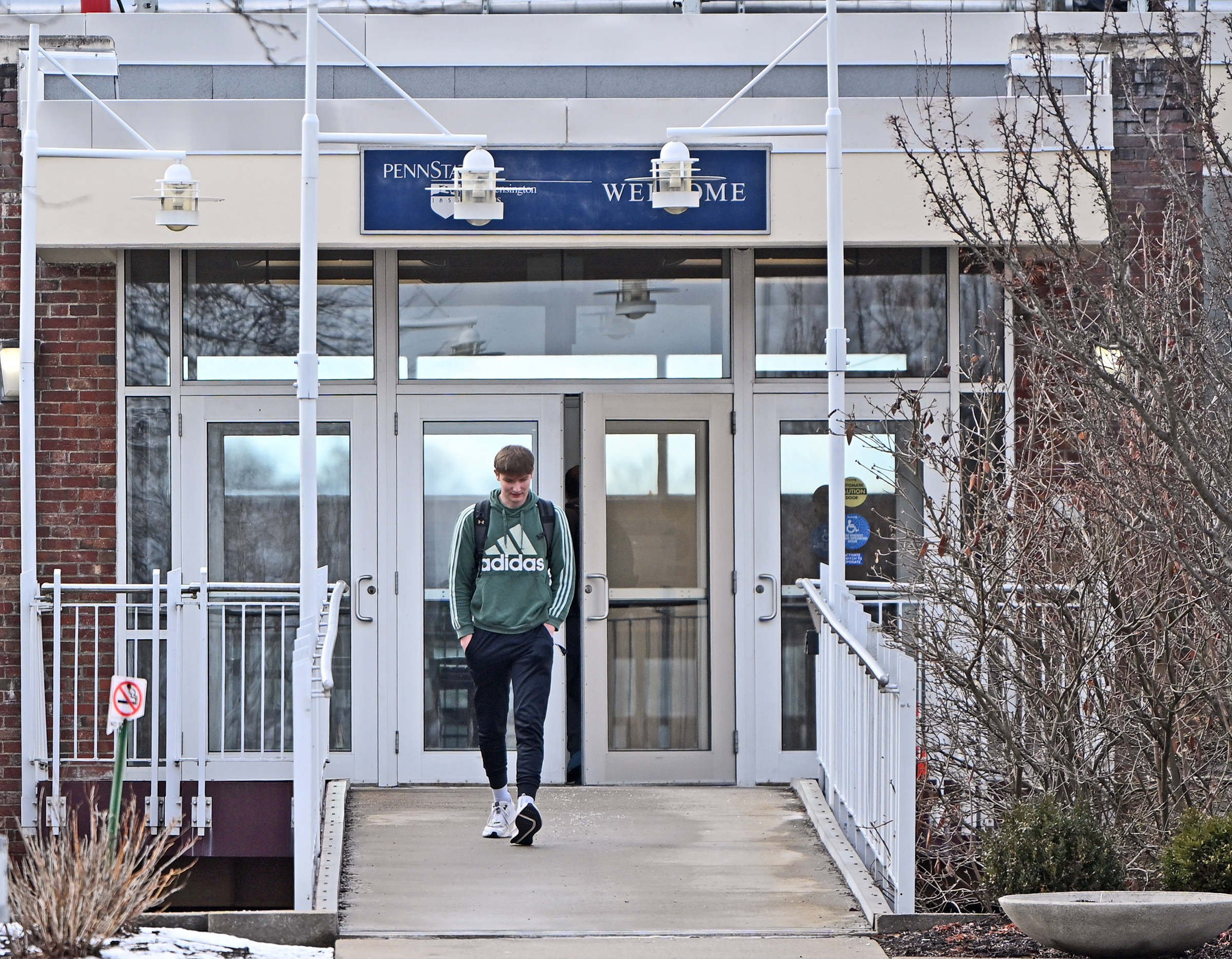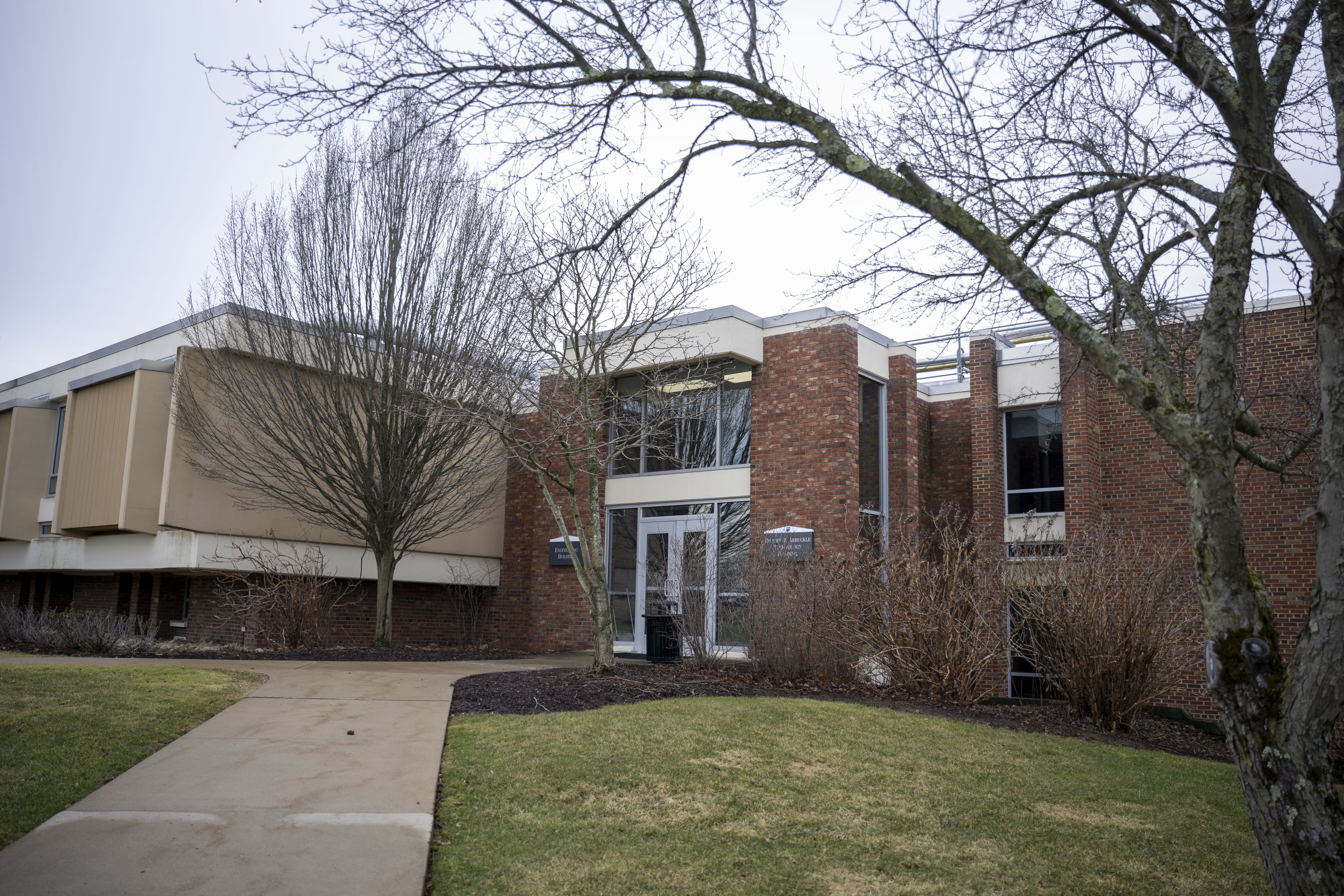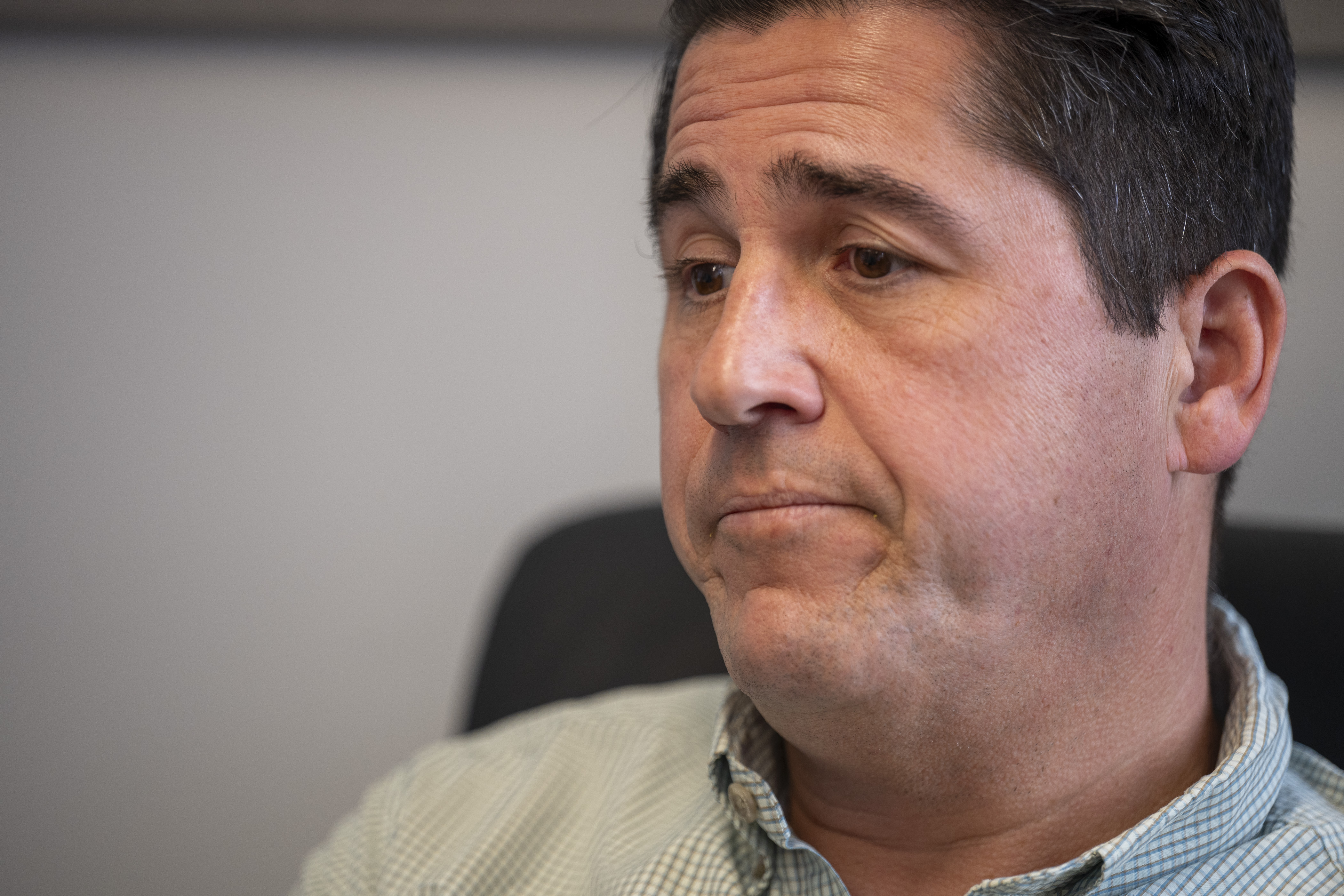
PENN STATE UNCERTAINTY
Penelope Morrison sees herself in many of her Penn State New Kensington students.
She came from a low-income household. She was the first person in her family to attend college. She never dreamed she’d earn her bachelor’s degree — let alone her master’s and doctoral degrees — but a small branch campus in North Carolina started it all.
It would be devastating if Pennsylvania students were robbed of the opportunities she once had, said Ms. Morrison, a professor of biobehavioral health at the New Kensington campus.
But they soon may be.
Penn State President Neeli Bendapudi announced Tuesday that 12 of the university’s 19 commonwealth campuses are at risk of closing amid mounting enrollment and financial challenges.
Western Pennsylvania could be hit especially hard.
New Kensington — along with every other branch campus in the greater Pittsburgh region — could be in its final years. Penn State administrators will decide the branch campuses’ fate by the end of the spring semester.
If any regional campuses are shuttered, Ms. Morrison and others worry it could have a detrimental impact on communities built on the educational and economic opportunities afforded by the campuses.
“These students are worth the investment. They deserve to have a place like this in the community,” Ms. Morrison said. “That’s why I’m here. That’s why a lot of our faculty are here. We know the value of educational places like this — what they can do for the lives of the students who are able to utilize them.”
‘There’s no road left’
Though Ms. Morrison said she was heartbroken by Tuesday’s announcement, she wasn’t surprised.
Rumors that the university would close campuses have persisted for months. Over the past year, the branch campuses have seen budget cuts, employee buyouts, merged programs and leadership consolidations.
But those moves weren’t enough to assuage administrators’ concerns of a university deficit that currently stands at $34 million. Penn State leaders have framed this decision as the final possible solution after decades of exhausting other options.
Ms. Bendapudi, who began leading Penn State in 2022, attributed the closure plan to enrollment downfalls at the satellite campuses, projected declines in Pennsylvania’s college-age population and what she sees as inadequate funding from the state.
At a faculty senate meeting Tuesday, she said problems had festered for years, but university leaders had “kicked the can down the road so many times there’s no road left.”
“We’ve got to do something,” Ms. Bendapudi said. “This has truly been talked about for over three decades.”
At Western Pennsylvanian campuses, enrollment declines between 2015 and 2024 have varied from 22% (Penn State Behrend in Erie) to 42% (Penn State Fayette). Other regional campuses include those at Beaver (30%), New Kensington (34%), Greater Allegheny (39%) and Shenango (39%).
Behrend, with more than 3,300 students enrolled in the fall, is the only campus in Western Pennsylvania that definitely will remain open. The region’s smallest campus by student size is Shenango, which is in Sharon, Mercer County, and enrolled just over 300 students this fall.
Challenges the campuses face are exacerbated by a looming demographic cliff that will particularly impact the Northeast and Midwest. The Keystone State’s share of high school graduates is expected to drop 17% by 2041.
Gov. Josh Shapiro said on Wednesday that Ms. Bendapudi and other leaders have made it clear “they need to right-size” and “invest in the campuses that are working.” State government will not be involved in their decisions, he added.
“I am pleased to see someone taking seriously the need to look at all of this,” Mr. Shapiro said.
Penn State isn’t the first institution to tackle this issue. In 2022, Pennsylvania’s State System of Higher Education merged six universities into two, creating Pennsylvania Western University in the west and Commonwealth University in the east.
As the population of Northeastern and Midwestern states continues to shrink, more collegiate closures and consolidations are likely, said Julie Wollman, a professor who studies colleges in the University of Pennsylvania’s Graduate School of Education.
“You can have a vision of having a campus within 30 minutes of everyone in the state, but if there’s not enough people in the state who want to come to that campus, it’s not financially viable,” Ms. Wollman said. “I don’t think this is a shift in [Penn State’s] priorities or mission. I think it’s a financial and demographic reality.”
‘It could never be our campus’
Students and professors at the commonwealth campuses are cognizant of the financial and enrollment challenges. But they also know the importance of the campuses.
As a first-generation college graduate and a product of a Penn State commonwealth college, Greater Allegheny business professor Michelle Gordon believes there are life-changing opportunities for students at stake.
“If I hadn’t gone to Penn State New Ken, I wouldn’t have gone to college at all,” Ms. Gordon said. “When you take away the campuses, you really undermine this land grant institution and this beautiful mechanism that Pennsylvania has created to allow everybody access to education.”
With smaller class sizes, close proximity to home and more affordable prices, the branch campuses tend to be a hub for first-generation, lower-income and non-traditional students.
They also serve a larger share of Pennsylvanians than the flagship University Park campus: Eight in 10 commonwealth students are from the Keystone State, compared to six in 10 at the main campus.
“For a lot of us, we can’t really afford to go to University Park or another university,” said Meredith Carter, a New Kensington senior from Penn Hills. “The opportunities I’ve had at this campus … would not have been possible at a larger university.”
Yearly in-state tuition at the commonwealth campuses is roughly $5,000 to $7,000 cheaper than at University Park. The campuses offer bachelor’s degrees, associate degrees and certificates, as well as “2+2” degree pathways that allow students to begin their education at a satellite campus and complete their final two years at University Park.
Students impacted by closures will be able to complete their degrees at Penn State, university officials have said. But for students pursuing social work, like Greater Allegheny sophomore Sa’mya Gurley, transferring to another campus may not be possible. The McKeesport location is the only Penn State campus to offer a bachelor of social work degree.
“I would have to go to a whole other school,” said Ms. Gurley, who chose to attend Greater Allegheny for its affordability. “I was thinking about Pitt, but the tuition is kind of high.”
Faculty and staff affected by closures may be reassigned to another campus, Ms. Bendapudi indicated, but that isn’t guaranteed.
Even tenured professors don’t know if they’ll have a job in three years. According to Penn State policy, program elimination or revision can affect a tenured faculty member’s appointment, but “a good faith effort” will be made to continue the faculty member in a similar capacity.
“I was hoping to retire here at Penn State,” said Clifford Manlove, an English professor at Greater Allegheny. “I committed to make an agreement with them to be a tenured faculty member, which means I’m making a lifelong commitment to this institution. I feel that’s been betrayed.”
Greater Allegheny enrolled 353 students in the fall, while New Kensington enrolled 432.
Even if both campuses remain open, New Kensington history professor John Craig Hammond is concerned that last week’s announcement could impact enrollments even further.
Penn State leaders have said shuttered campuses will remain open through at least the 2026-27 school year. That means incoming freshmen could complete two years at a closing branch but may not be able to finish a four-year program. Greater Allegheny offers 10 bachelor’s degree programs; New Kensington offers eight.
“It’s hard to imagine that this [announcement] will have anything other than a severe impact on enrollment next year,” said Mr. Hammond, who also serves as New Kensington’s assistant director of academic affairs.
Ms. Morrison wishes university officials would have held off on making an announcement until they decided which campuses would close. Now, anxiety will fester on the New Kensington campus for weeks as its future remains in limbo.
“It would have been nice … to have a more concrete decision — even if it’s not what we want to hear, even if it doesn’t make us happy,” Ms. Morrison said. “I think just knowing would be helpful for a lot of folks.”
New Kensington sophomore Cheriden Turiczek was shocked by the announcement. New Kensington has been “a home away from home” to Ms. Turiczek, who is from the Erie area. At New Kensington, she has participated in THON and new student orientation.
“It could never be our campus,” Ms. Turiczek said with hope in her voice. She plans to complete her business administration degree at the Westmoreland County campus. “Being on this campus is different than seeing it from the outside. It’s one big family.”
‘Right here in their backyard’
It’s difficult to imagine an Allegheny Valley without Penn State New Kensington, said senior Ryan Gould.
“It would be really depressing for the community if something were to happen to this campus,” said Mr. Gould, who is from Vandergrift, a 20-minute drive from the Upper Burrell campus.
Like many other branch campuses, Penn State New Kensington fills a vital role: It is the only institution in upper Westmoreland County and northeast Allegheny County to offer four-year degrees. A student living in New Kensington would face a roughly 40-60 minute commute to attend one of the other universities in the Pittsburgh or Greensburg areas.
New Kensington Mayor Tom Guzzo fears that closing the campus would have a detrimental impact on the area’s youth and economy.
In the past decade, Penn State New Kensington has been instrumental in the city’s revitalization efforts, Mr. Guzzo said. The campus is responsible for providing 300 manufacturing jobs and supporting dozens of entrepreneurs in the region through its Digital Foundry and Launchbox program.
“Penn State New Ken has played a major role and had a significant positive impact on the city of New Kensington’s successful revitalization,” Mr. Guzzo said. “It is my hope that I will get to speak to Dr. Bendapudi and press upon her the significance of keeping the Penn State New Kensington campus.”
Similarly, McKeesport Mayor Michael Cherepko said the Greater Allegheny campus has a valuable place in McKeesport, the Mon Valley and Allegheny County as a whole.
“It’s important for students in our region to have access to state-of-the-art university programs right here in their backyard,” said Mr. Cherepko, who attended the Greater Allegheny campus through the 2+2 program.
Shuttering campuses could have some economic impact, said Ms. Wollman of the University of Pennsylvania. The extent of that will be unique to each campus and depend on other educational opportunities and businesses in the area, she said.
“It really depends on the particular campus, but given the very small enrollments on each of these campuses, I don’t think it will be as much of an economic impact overall,” Ms. Wollman said. “Certainly for individuals [there will be impact].”
But Andrew Koricich, executive director of the Alliance for Research on Regional Colleges, worries that job loss stemming from closure could have a trickle-down effect on business revenue, property value and K-12 education.
He is also concerned that university leaders won’t have time to properly study the campuses’ broader impact on their regions in the three-month time span they’ve allotted.
“To me, it’s so disrespectful to the communities that are going to be impacted,” said Mr. Koricich, a Penn State alumnus and higher education professor at Appalachian State University. “I have huge misgivings about a process that is short-circuited or is being done without any input from the taxpayers who will be impacted.”
Shuttering campuses also means pulling resources from already struggling communities. Every Western Pennsylvanian community with an at-risk campus has seen population declines over the past decade.
By taking away Penn State campuses in these areas, Ms. Morrison worries that residents won’t have access to other higher education opportunities.
During her nine years at New Kensington, she has provided hungry students with meals and helped find housing for students. She has watched a co-worker leave campus to pick up a student whose car broke down.
Now, she isn’t sure what campus closure could mean for the New Kensington area or other under-resourced communities at risk of a similar fate.
“I don’t know what this means for the long-term repercussions of education in Pennsylvania,” Ms. Morrison said. “I don’t think any of us do.”
Post-Gazette staff writer Ford Turner contributed to this report.

